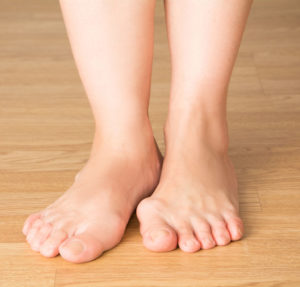 One of the most common questions we field when it comes to foot and ankle surgery is “What is the likelihood of my problem coming back?” It’s a fair question, and unfortunately we can never really give a straightforward answer because it depends on a number of factors, like what problem you had treated, how it was treated, how your rehab goes and how active you remain once healed.
One of the most common questions we field when it comes to foot and ankle surgery is “What is the likelihood of my problem coming back?” It’s a fair question, and unfortunately we can never really give a straightforward answer because it depends on a number of factors, like what problem you had treated, how it was treated, how your rehab goes and how active you remain once healed.
However, new research suggests that we may be able to offer a more accurate prediction of the recurrence rates after bunion surgery. According to researchers, ankle surgeons may be able to provide a good estimate of the risk that a bunion will return over time by taking a look at a non-weight bearing x-ray after the bunion is surgically removed.
Bunion Return
To determine if they could provide a more accurate estimation for bunion recurrence, researchers looked at a total of 117 bunion operations. Interestingly, all but two of the operations were performed on women, suggesting that tight fitting shoes are a common cause of bunion development. Researchers took a non-weight bearing x-ray of each individual’s foot after the bunion removal procedure and re-evaluated them after a period of two years.
After two years, researchers noted that there was a 17 percent recurrence rate among study participants. Recurrance was defined as a hallux valgus angle (HVA) – the angle formed by the toe bone and the first metatarsal bone – of 20 degrees of greater. When comparing x-rays, researchers uncovered that patients with larger preoperative and postoperative HVAs were at the greatest risk for recurrence. They noted that bunions were 28 times more likely to recur when to postoperative HVA was eight degrees or larger than when the HVA was less than eight degrees.
“The recurrence of hallux valgus is one of the most important complications after surgery because it is closely related to patient satisfaction,” researchers wrote.
Researchers hope to confirm their findings in a future study, but if they hold true, surgeons may be able to better predict the likelihood that a bunion operation will take care of a bunion problem for good, or if the patient is likely to have a bunion return in the future. Also, in patients with a higher risk of recurrence, surgeons can take more steps to reduce the HVA angle in order to reduce the likelihood of future bunion development.